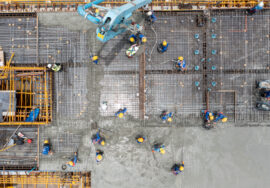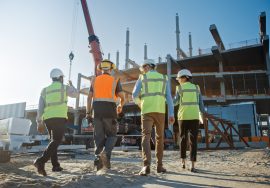
Building Performance Optimization: Enhancing Efficiency and Sustainability
Building Performance Optimization: Enhancing Efficiency and Sustainability in Construction
In today’s sustainability-driven world, optimizing the performance of buildings has become more than a trend—it’s a necessity. Building performance optimization focuses on improving energy efficiency, indoor comfort, resource use, and operational costs throughout a building’s lifecycle.
With the rise of sustainable architecture and clean construction technology, modern developers are leveraging smart systems and data-driven strategies to create eco-efficient structures that benefit both occupants and the environment.
What Is Building Performance Optimization?
Building performance optimization refers to the continuous process of improving a building’s design, systems, and operations to achieve maximum efficiency and sustainability.
It involves using technology, data analytics, and innovative design techniques to monitor and enhance areas such as:
-
Energy efficiency
-
Water usage
-
Indoor air quality
-
Thermal comfort
-
Lighting performance
By applying building performance optimization, construction professionals can ensure that structures meet environmental standards and contribute to a low-carbon future.
Why Building Performance Optimization Matters
The construction and operation of buildings account for nearly 40% of global energy-related carbon emissions. Optimizing building performance helps address this issue by reducing waste, improving efficiency, and enhancing overall sustainability.
Here are some key benefits of building performance optimization:
-
Energy Savings: Reduces power consumption through smart systems and efficient design.
-
Lower Carbon Emissions: Supports carbon footprint reduction and net-zero carbon building goals.
-
Improved Indoor Comfort: Ensures optimal temperature, air quality, and lighting for occupants.
-
Operational Cost Reduction: Cuts long-term maintenance and energy bills.
-
Compliance and Certification: Helps meet LEED-certified construction and IGBC standards.
Ultimately, building performance optimization enhances both environmental and economic performance across the construction sector.
Key Strategies for Building Performance Optimization
1. Energy-Efficient Design
Implementing energy-efficient construction practices such as passive solar design, high-performance insulation, and efficient HVAC systems improves energy conservation and indoor comfort.
2. Smart Building Systems
Integrating sensors, IoT devices, and Building Management Systems (BMS) allows for real-time monitoring of energy usage, temperature, and air quality—essential for building performance optimization.
3. Renewable Energy Integration
Incorporating solar panels, wind turbines, or geothermal systems reduces dependence on fossil fuels and enhances the sustainability of buildings.
4. Life Cycle Assessment
Conducting life cycle assessment in construction helps identify materials and processes that have the lowest environmental impact over time.
5. Regular Performance Audits
Monitoring building systems regularly helps identify inefficiencies, enabling continuous building performance and maintenance improvements.

Technologies Driving Building Performance Optimization
Modern technology plays a key role in enabling building performance . Some leading innovations include:
-
AI and Machine Learning: Predict energy demand and optimize resource use.
-
Digital Twins: Virtual models simulate building performance to improve design.
-
Energy Modeling Software: Tools like DesignBuilder and eQUEST analyze building efficiency.
-
Smart Sensors: Collect real-time data on lighting, air quality, and temperature.
By combining these technologies, developers can design smarter and more resilient buildings that respond dynamically to user needs and environmental changes.
Building Performance Optimization in India
With India’s rapid urbanization and climate commitments, building performance is becoming a national priority.
Government initiatives like the Energy Conservation Building Code (ECBC) and the Smart Cities Mission encourage the use of efficient designs and smart technologies.
Organizations such as the Bureau of Energy Efficiency (BEE) and the Indian Green Building Council (IGBC) are actively promoting the integration of sustainable construction practices and performance-based standards across the sector.
Steps to Implement Building Performance Optimization
-
Conduct a Building Audit: Assess current energy and resource usage.
-
Set Measurable Goals: Define performance metrics for energy, water, and comfort.
-
Adopt Smart Technologies: Integrate automation and monitoring systems.
-
Upgrade Infrastructure: Retrofit old buildings with efficient systems and materials.
-
Train Facility Managers: Educate teams to operate and maintain systems efficiently.
By following these steps, developers can ensure continuous improvement and sustainable outcomes through building performance .
Partner with AMS India for Sustainable Construction Excellence
At AMS India, we help organizations achieve building performance through advanced technology, green design, and sustainable engineering practices.
Our experts specialize in energy-efficient construction, renewable energy integration, and smart monitoring solutions that enhance both performance and sustainability.
Partner with AMS India to create buildings that are not only efficient but also aligned with India’s green development goals.
Conclusion: The Future of High-Performance Buildings
Building performance is key to achieving long-term sustainability, comfort, and cost-effectiveness. By combining smart technologies, energy efficiency, and sustainable design, construction professionals can create high-performing buildings that meet modern environmental challenges.
In the pursuit of greener cities and smarter infrastructure, building performance stands as the foundation of a sustainable future.
Read more related articles to enhance your knowledge and make informed decisions
Cost-Effective Modular Construction: Fast, and Sustainable Building Solutions
Smart Modular Buildings: Innovative, Efficient, and Sustainable Construction








